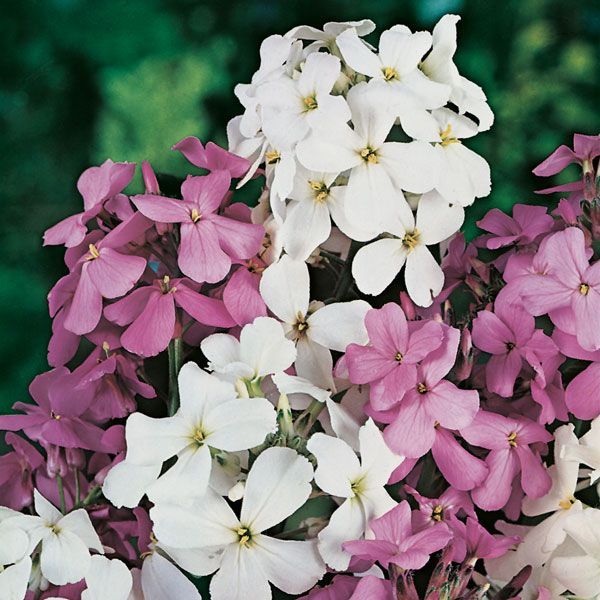Sweet Rocket
KEY INFORMATION
Height: to 90cm
Spread: to 40cm
Biennial
Sun / semi-shade
Germination: 14 - 30 days
VARIETIES AVAILABLE FROM COLLIE FLOWERS
Crown Mix
SOWING & GROWING SCHEDULE
Sow Indoors: Year 1: April - July
Sow Outdoors: Year 1: September - October
Plant Out: Year 1: September - October. Year 2: March - April
Blooms: Year 2: April - July

Sweet rocket, Hesperis matronalis, is a pretty biennial, bearing white or purple flowers similar to honesty.
Leave them to seed themselves and they will maintain this diversity indefinitely, gradually naturalising over a large area. The flowers' fragrance is as sweet as a violets, and most pronounced in the evening. It looks good when allowed to drift, naturally through an informal sunny or partially shaded border, especially in a cottage garden or wildlife garden scheme.
Sow Sweet Rocket from April to July on the surface of a good seed compost. Do not cover the seed. Place in a propagator or seal the seed tray inside a polythene bag until after germination. Keep the surface of the compost moist but not waterlogged and do not exclude light, as this helps germination.
When seedlings are large enough to handle, transplant into 7.5cm pots and grow on in cooler conditions. When the plants are well grown gradually acclimatise them to outdoor conditions for 10-15 days before planting outdoors in late Summer/early Autumn.
Alternatively, over winter Sweet Rocket plants in a cold frame and plant them out the following spring. Plant at a distance of 15cm apart in well drained, reliably moist soil in full sun or semi shade.
You can also direct sow Sweet Rocket outdoors in September and October where they are to grow in soil which has been raked to a fine tilth. Sow seeds thinly, at a depth of 6mm in drills spaced 30cmapart. Water the ground regularly, especially during dry periods. When seedlings are large enough to handle, thin them out to 15cm apart.
TOP TIP
Feed and water regularly until fully established. These plants will often seed freely to create large clumps of seedlings that will flower in the following year. After flowering, rather than removing the entire plant, I have found if you simply cut down the flowering stems the plant is likely to act as a short-lived perennial, coming into flower again in Year 3, and occassionally, Year 4.
